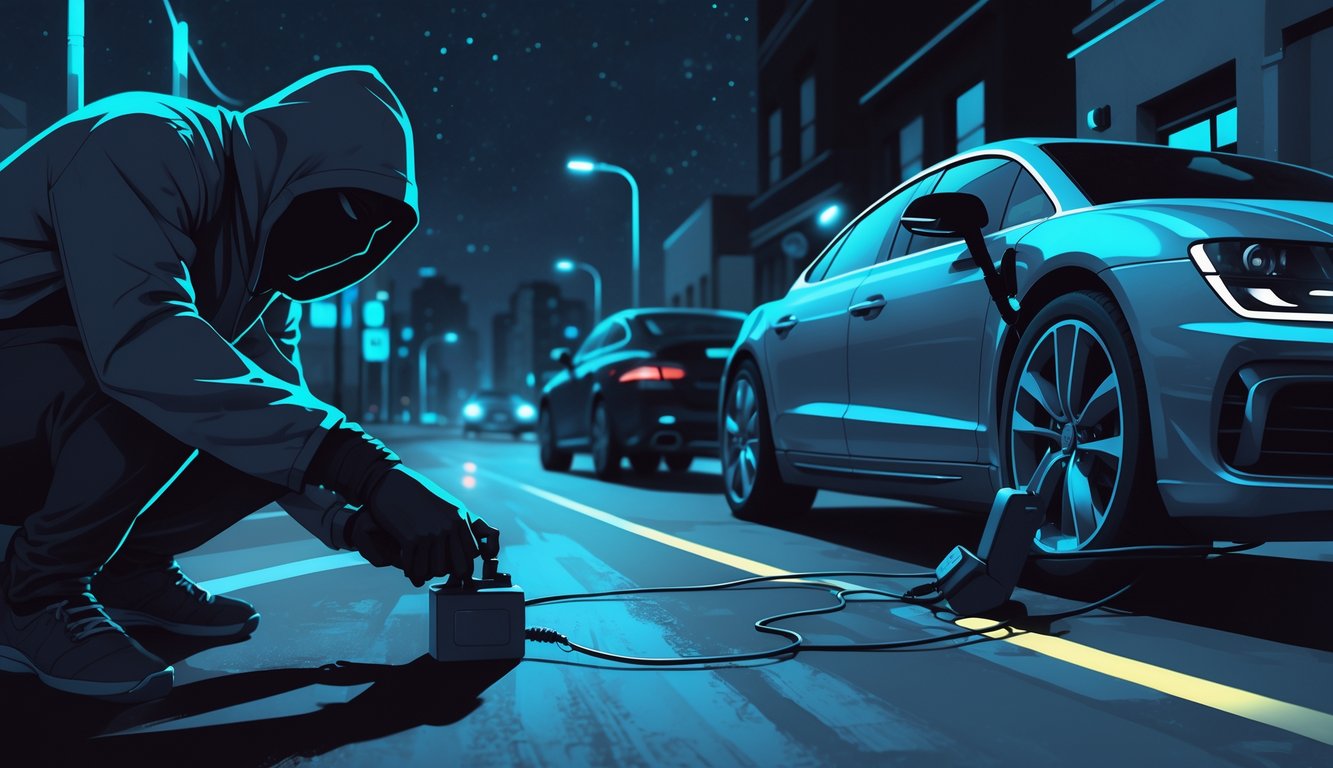
How Relay and Keyless Entry Theft Works
Tried explaining relay theft to my uncle—he thought Faraday pouches were for science fairs. Literally watched a YouTube clip last week: two guys, relay amp, hoodies, car gone. No drama, no broken glass, just signal grab and walk away.
Signal Amplification and Hacking
People keep calling keyless entry “convenient,” but I’m not convinced anymore. Here’s how it goes: one thief hangs out by your front door with a signal amplifier (probably right by your keys), another stands by your car. The gadgets are dirt cheap, like $200 online, and that’s being generous.
They just boost your fob’s signal so the car thinks you’re standing right there. Most cars don’t log anything weird—no alarms, nothing for insurance to look at, not even a blip on your dash cam unless you’re obsessive about checking. NICB’s been connecting these attacks to a 30% spike in keyless thefts since 2023. The “hackers” aren’t even that clever—just organized. Police keep complaining about the same neighborhoods getting hit over and over, nobody seems to catch on.
Honestly, keyless entry feels like it was invented for lazy people (me included), but who’s actually putting their fob in a signal-blocking pouch every time? Relay theft is just too easy, too fast, and almost impossible to prove to insurance unless you have security footage of the actual theft.
Cars Most at Risk from Keyless Theft
And don’t get me started on the “luxury means safer” myth. It’s a joke. Insurance data shows stuff like Toyota RAV4, Ford Fiesta, Mercedes C-Class—all top targets for relay thefts. Keyless comes standard now, even on mid-range cars. Always-on fobs, easy-pairing, no extra steps. Thatcham Research said 98% of keyless systems failed their relay attack tests in 2024. Dealers never mention disabling keyless, and nobody asks.
Even basic hatchbacks are just as vulnerable as the expensive stuff. Premiums go up, and nobody seems to care. I actually asked a dealership tech if customers ever bring up signal shielding—he laughed. That tells you everything.
What’s hilarious (or just sad): half the advice online is “put your keys in the microwave.” Seriously? Maybe just demand better tech from the people selling us these cars. But nah, insurance adjusters are stuck with a pile of “no forced entry” claims, and we’re all just hoping we’re not next.
The Hidden Dangers of VIN Cloning
So, you drag yourself to the DMV, triple-check all your paperwork, and think, “Cool, Civic’s officially mine.” But somewhere, someone’s already peddled a car with your VIN to some poor sap who’s about to get a crash course in title fraud and insurance headaches. VIN cloning—yeah, it’s real, and honestly, I’m still not 100% sure what “VIN” stands for. Vehicle Identification Number? Something like that. Anyway, these crooks just swap those numbers out while I’m still Googling the difference between a coupe and a sedan. It’s like getting pickpocketed by someone who never even shows up.
How Thieves Fake Vehicle Identities
Carfax? Please. I once met this mechanic in Dallas—guy’s superpower was spotting a fake VIN rivet just by glancing at it. Not a job you’ll find on LinkedIn, but probably should be. Thieves just walk around, jot down legit VINs from cars that match theirs (same make/model/year), and slap that number onto a stolen car. The weirdest part? These cars usually end up in states where nobody’s really watching. NICB says about 30% of recovered cloned cars had paperwork “verified” by notaries who, honestly, I doubt could spell “Odyssey” if you spotted them the vowels.
Dealerships aren’t immune either. I heard about one that took a trade-in with a “clean” history, only to get a fraud alert from the DMV. Turns out, the real version of that car was just living its best life in another state. Insurance? Yeah, they don’t care if you bought a re-VINned car by accident—your claim’s dead on arrival. Subaru Starlink, Toyota Techstream, whatever—none of that helps when the paperwork itself is a lie.
Detecting and Avoiding Re-Vinned Cars
Ever see a VIN sticker that looks like it came from a dollar store? Haunts me. My cousin’s Explorer went through some “inspection service” in Phoenix, got a thumbs up, but later he noticed the VIN on the windshield and the engine didn’t match. Font was Times New Roman. Seriously? Who does that? IIHS folks say you should check the VIN everywhere—dashboard, engine, frame, registration—but most people I know don’t even pop the hood.
Nobody at the dealership tells you to check for date stamps or look for weird grinding around the VIN plate. If the screws look brand new, or the plate’s all scratched up, just leave. I did. Want peace of mind? Hire a real auto theft detective, not your cousin’s friend who “knows cars.” Red flags? Mismatched VINs, sketchy paperwork, random welds, shiny new screws where there shouldn’t be.
Salvage or rebuilt title? Pause. Honestly, if a seller gets weird about you checking VIN stickers, just bail. No Carvana return policy is gonna save you from a cloned VIN, and your insurance rep will just sigh and read from the script.
